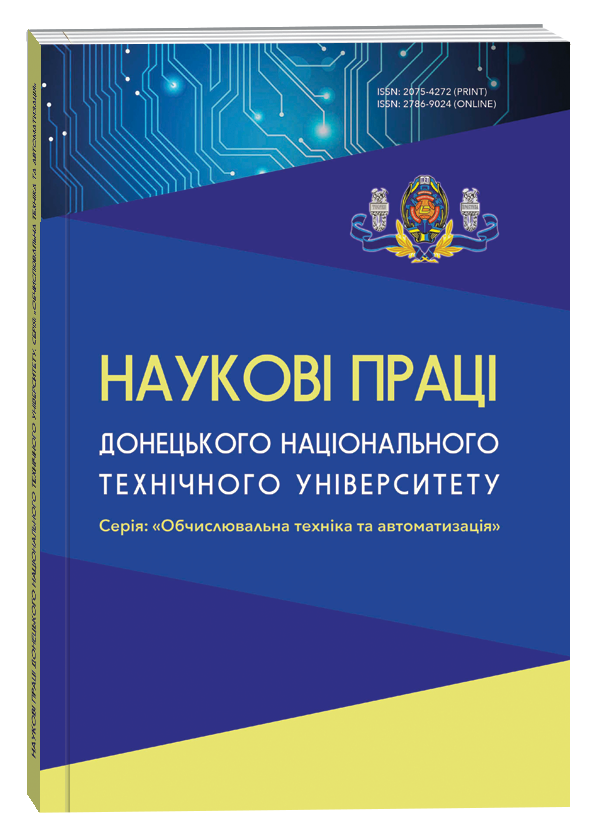USING AGENTSCRIPT TO PRODUCE MULTI-LEVEL AGENT-BASED MODELLING MODELS
DOI:
https://doi.org/10.31474/2786-9024/v2i3(35).319553Keywords:
multi-agent systems, modelling, prototyping, AgentScript, dynamic systems, web technologies, simulation, data visualisationAbstract
The relevance of the study is driven by the need to find affordable and effective tools for modelling complex systems that would be suitable for both research and educational purposes. Existing platforms, although providing significant opportunities, are often difficult to learn, which creates barriers to their widespread use. The purpose of the article is to study the capabilities of the AgentScript platform for creating agent-based models in the web environment, as well as to analyse its advantages and limitations in comparison with traditional tools. The practical significance of the work lies in highlighting the ways in which AgentScript can be used for rapid prototyping, development of models of medium complexity and interactive display. The tool allows to implement modelling without the need to install specialised software, which contributes to its popularisation among students and researchers. The scientific significance of the work lies in determining the prospects of using AgentScript for modelling multilevel systems. Particular attention is paid to the analysis of the platform architecture based on the Model-View-Controller template, which ensures efficient modelling. The article provides an overview of AgentScript functionality, describes the process of creating agents, environments and behavioural rules, demonstrates examples of implementing models for studying the spread of diseases, simulating forest fires and interactions in ecosystems, and compares the platform with other tools, which emphasises its advantages, such as accessibility and ease of integration with modern web technologies. The results show that AgentScript is an effective tool for research and education in the field of agent-based modelling, which is able to meet the needs of users with different levels of training.
References
Bora S., Emek S. Agent-Based modeling and simulation of biological systems. Modeling and computer simulation. 2019. URL: https://doi.org/10.5772/intechopen.80070. Accessed: 08.12.2024.
Grimm V., Railsback S. F. Agent-Based models in ecology: patterns and alternative theories of adaptive behaviour. Agent-Based computational modelling. Heidelberg. P. 139–152. URL: https://doi.org/10.1007/3-7908-1721-x_7. Accessed: 08.12.2024.
Klein, D., Marx, J., Fischbach, K. Agent-based modeling in social science, history, and philosophy. An introduction. 2018. Vol. 43, No. 1 (163), Special Issue: Agent-Based Modeling in Social Science, History, and Philosophy (2018), P. 7-27. URL: https://doi.org/10.12759/hsr.43.2018.1.7-27. Accessed: 08.12.2024.
Challenges, tasks, and opportunities in modeling agent-based complex systems / L. An et al. Ecological modelling. 2021. Vol. 457. P. 109685. URL: https://doi.org/10.1016/j.ecolmodel.2021.109685. Accessed: 08.12.2024.
Agent Based Modelling and Simulation tools: a review of the state-of-art software / S. Abar et al. Computer science review. 2017. Vol. 24. P. 13–33. URL: https://doi.org/10.1016/j.cosrev.2017.03.001. Accessed: 08.12.2024.
Allan, R.J.: Survey of Agent Based Modelling and Simulation Tools. 2010. In: Technical Report DL-TR-2010-007, Science and Technology Facilities Council. Accessed: 08.12.2024.
Tobias, R., Hofmann, C.: Evaluation of free Java-libraries for social-scientific agent based simulation. In: Journal of Artificial Societies and Social Simulation, 2004. Vol. 7. Accessed: 08.12.2024.
Kravari K., Bassiliades N. A survey of agent platforms. Journal of artificial societies and social simulation. 2015. Vol. 18, no. 1. URL: https://doi.org/10.18564/jasss.2661. Accessed: 08.12.2024.
Allan, R. J. (2010). Survey of agent based modelling and simulation tools (pp. 1362-0207). New York: Science & Technology Facilities Council. Accessed: 08.12.2024.
Maslova N. A., Movchan O. V. Use of intelligent agents in solving resource allocation problems // Artificial Intelligence. – 2014. – No. 3. – P. 80–89. – URL: http://nbuv.gov.ua/UJRN/II_%202014%20_3_11. Accessed: 08.12.2024.
P. Pimenta, “Application of model-driven engineering to multi-agent systems: a language to model behaviors of reactive agents”, Diss. Université Montpellier, 2017. Accessed: 08.12.2024.
Collier N. T., Ozik J., Tatara E. R. Experiences in Developing a Distributed Agent-based Modeling Toolkit with Python. 2020 IEEE/ACM 9th Workshop on Python for High-Performance and Scientific Computing (PyHPC), GA, USA, 13 November 2020. 2020. URL: https://doi.org/10.1109/pyhpc51966.2020.00006. Accessed: 08.12.2024.
AgentScript. [Online]. URL: http://agentscript.org/. Accessed: 08.12.2024.
Model-view-controller. [Online]. URL: https://uk.wikipedia.org/wiki/ Model-view-controller. Accessed: 08.12.2024.
Code smells for Model-View-Controller architectures / M. Aniche et al. Empirical Software Engineering. 2017. Vol. 23, no. 4. P. 2121–2157. URL: https://doi.org/10.1007/s10664-017-9540-2. Accessed: 08.12.2024.
Three.js. Online]. URL: https://en.wikipedia.org/wiki/Three.js. Accessed: 08.12.2024.
Codepen. [Online]. URL: https://codepen.io/your-work. Accessed: 08.12.2024.
Casabona J. HTML and CSS: visual quickstart guide. Pearson Education, Limited, 2021. Accessed: 08.12.2024.
Downloads
Published
How to Cite
Issue
Section
License
Copyright (c) 2024 Yelyzaveta Yezhova, Nataliia Maslova

This work is licensed under a Creative Commons Attribution-NonCommercial-NoDerivatives 4.0 International License.





